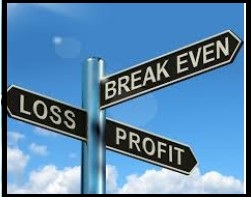How do I value my wares/articles of merchandise
Table of Contents
How do I value my wares/articles of merchandise, manufacture goods or services. Wares can be defined as articles for sale or manufactures goods for sale. It also includes intangible items, such as services or products of artistic or intellectual creativity, that are saleable.
It has been a burden on me to discuss this with you. I have had to deal with certain traders who buy goods/services for sales, and who just sell anyhow. I began to wonder how they survive in the business. Truly, the fact is that many of them don’t survive in the business just because they don’t value their wares properly.
My Burden for You:
If you are in this class of businessmen and women, this article is for you. This article will let you know how to get at your selling price; a selling price that will be able to keep you in the business. This is because any time you don’t value your wares properly, you will not be covering your operation costs. This singular action means you are paying the business bills from your capital.
There are no two ways about it, if you don’t cover your operation cost, what we call OPEX you will soon close the shop. Even if you change to another business thinking you will do better there, with this principle of not deliberately doing business to cover your operation cost, you will still come out of the business.

How do I value my wares/articles of merchandise
Cost of Good Sold/Produced:
The first thing you will always derive in your business, is the cost of goods sold or produced if you are in one type of manufacture or the other. Costs of goods sold (COGS) are the direct costs attributable to the procurement/ production of the goods sold by you.
For a trader this include all the cost incurred in procuring the article and all other ancillary cost like transportation, payment to wheel barrow pusher, and other handling charges. Accountants call this ‘carriage in words’. If you are manufacturing your own goods like a Baker producing bread, this amount includes the cost of the materials used in making the bread along with the direct labour costs used to produce the breads. For proper analysis of the production cost certain fixed costs like depreciation of the fixed assets used in the production are also added.
The above narrative gives us something like:
Wares (materials) + direct costs of sales/production = total cost of goods/services.
Say; 12,000 + 6,000 = 18,000 ( you can use your currency to denominate this)
How do I value my wares/articles of merchandise
The next question then is; how do I ascertain my selling price?
Many of you don’t get it right here too. There is what is called ‘Mark-up’. Mark-up is the percentage of the total cost that you will add back to the total cost to take care of your OPEX ( Operating Expenses). This is where many of you fail it. If there is no enough from here to cover your running cost, you will certainly be paying the bills using your capital.
From the above total cos of production equation, we got 18,000 as the total cost of production. It’s better you now sit down and calculate your OPEX so that you will know how much you will add per unit of the goods/services to cover the OPEX and leave something for you as profit. Yet you don’t have to burden your few goods/services with so much OPEX. I had in my earlier post dealt with what we call Break-even analysis/point. Simply put, you must have enough goods/services to allocate these costs to.
How do I value my wares/articles of merchandise
Let’s continue. If your OPEX is 4,000 ( administration, fixed cost ( CAPEX – Capital Expenses) elements like depreciation etc.), you have to fix a Mark-up that will cover this cost. In our example, can 20% or 30% do it? What is 20% or 30% of 18,000? 20% of 18,000 is 3,600 while your OPEX is 4,000. If you run this business like this, you will be paying 400 per unit to sell the goods from your capital, and gradually you will deplete your capital and close down.
Now, 30% of 18,000 is 5,400. This is okay for you. This will be able to pay your OPEX of 4,000 and leave 1,400 as profit. It means your selling price is going to be 23,400. This is how you must always evaluate your wares.
As to whether the quantity of goods/services are enough to cover your OPEX is another subject of discussion covered in my discussion on break-even analysis. There are other thing I want to let you know in this connection so that you will be able to watch your business properly.
The gross profit:
Gross profit is the profit you make after deducting the costs associated with making and selling your products. It’s also the costs associated with providing the goods/services.
We had above; Wares (materials) + direct costs of sales/production = total cost of goods/services; Say; 12,000 + 6,000 = 18,000. We have also gotten 23,400 as the selling price. Therefore the gross profit will be:
Turnover 23,400
Less Direct cost of sales/production 18,000 to give us;
Gross Profit 5,400
How do I value my wares/articles of merchandise
This gross profit is an important parameter in measuring your business performance. A business that doesn’t make any or enough gross profit will not go far. Therefore, always watch this. The next step is to ascertain the Net Profit.
Net Profit:
Net Profit is the actual profit made by the business. It’s gross profit less all the operating expenses.
Therefore from our illustration above, we have derived gross profit as 5,400.
We have to charge the OPEX – the business running expenses on this 5,400.
So, Gross Profit = 5,400
Less Running costs = 4,000 to give us
Net profit = 1,500
Profitability Measurements:
Your business can actually go on fine now. You can now calculate your Gross margin, and Net Margin. You can also calculate your operation expenses ratio, and your Return on Investment Ratio (RIO). I have already dealt with most of these in my various business plan topics in this website. Just make time to read them.
How do I value my wares/articles of merchandise
Net Profit & Opportunity Cost:
Net Profit is very important in the business if you remember that there is a cost which economists call ‘ opportunity cost’ which are never reflected in accounting figures. It actually means that if you are not doing this business, you would be doing something else, like working for salary. The reasoning is that if your net profit does not even cover what you will earn working for another person, you would also be said to be making a loss from the economist’s point of view. Therefore, do your business in a way that you will cover all of these costs.
Stock Valuation:
The next thing I want to introduce to you here now is, how you will value your stock at the end of the accounting year and in the beginning of the next accounting year. Stock is valued at the cost or the selling price, whichever is lower. This is okay for you for now. Find out what I have on this next time.
Other topics you will need to know about is Fixed Assets Verification, and how your business Internal Control System works.
How do I value my wares/articles of merchandise
I’m happy that you now know how to value your wares. I’m also happy that this burden is off my shoulder now. I’m always here for you. If you have any questions please send them through our comment platform. If you need a business coach I’m available for you. For beginners is render such services free for a 12 calendar months. Therefore, I shall be happy if you would share this with your friends and others.

Deacon Anekperechi Nworgu, a seasoned economist who transitioned into a chartered accountant, auditor, tax practitioner, and business consultant, brings with him a wealth of industry expertise spanning over 37 years.



